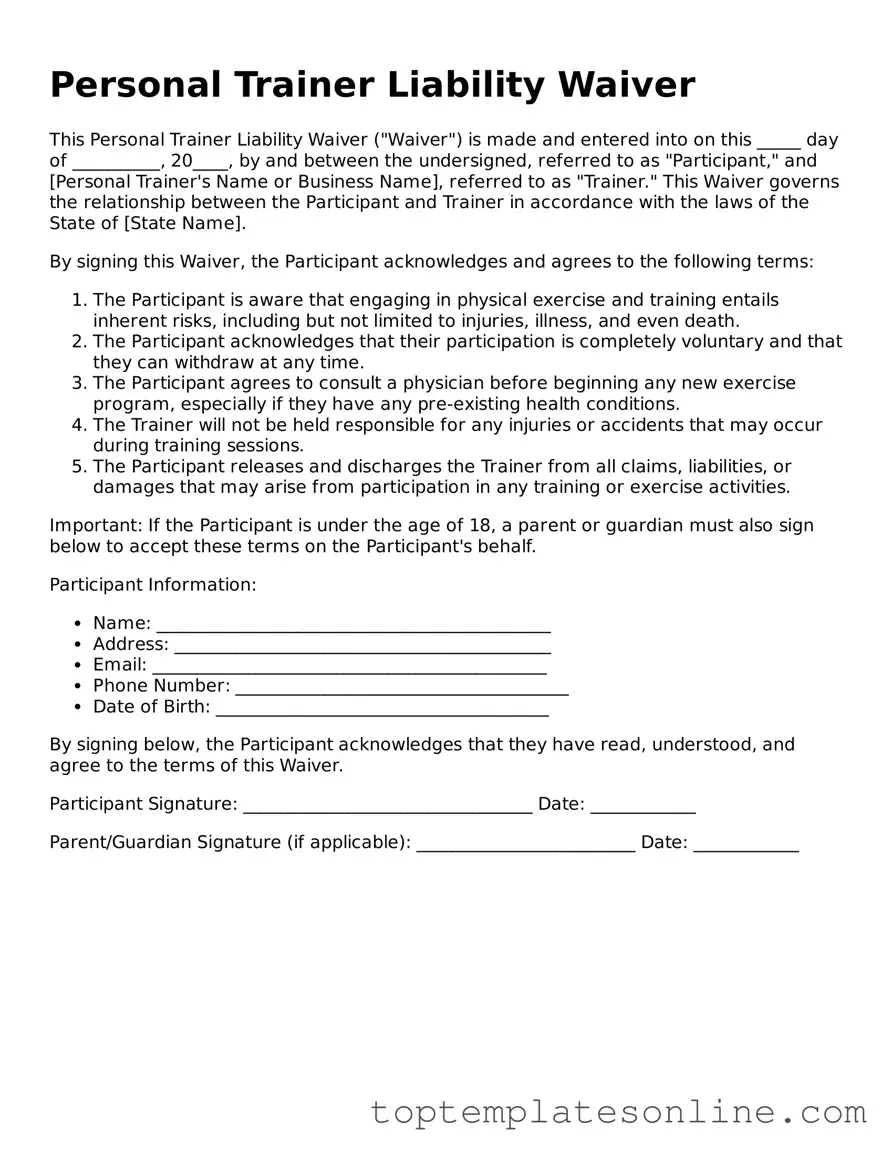Attorney-Approved Personal Trainer Liability Waiver Form
The Personal Trainer Liability Waiver form is a legal document designed to protect personal trainers from potential lawsuits related to injuries or accidents that may occur during training sessions. By signing this waiver, clients acknowledge the inherent risks of physical activity and agree not to hold the trainer responsible for any injuries sustained. Understanding this form is essential for both trainers and clients to ensure a safe and informed training environment.
Customize Personal Trainer Liability Waiver Here
